VIDEO TRACKING
Contents
Foreword
About the authors
Preface
Acknowledgements
Notation
Acronyms
1 What is video tracking?
1.1 Introduction
1.2 The design of a video tracker
1.2.1 Challenges
1.2.2 Main components
1.3 Problem formulation
1.3.1 Single-target tracking
1.3.2 Multi-target tracking
1.3.3 Definitions
1.4 Interactive versus automated tracking
1.5 Summary
2 Applications
2.1 Introduction
2.2 Media production and augmented reality
2.3 Medical applications and biological research
2.4 Surveillance and business intelligence
2.5 Robotics and unmanned vehicles
2.6 Tele-collaboration and interactive gaming
2.7 Art installations and performances
2.8 Summary
References
3 Feature extraction
3.1 Introduction
3.2 From light to useful information
3.2.1 Measuring light
3.2.2 The appearance of targets
3.3 Low-level features
3.3.1 Colour
3.3.2 Photometric colour invariants
3.3.3 Gradient and derivatives
3.3.4 Laplacian
3.3.5 Motion
3.4 Mid-level features
3.4.1 Edges
3.4.2 Interest points and interest regions
3.4.3 Uniform regions
3.5 High-level features
3.5.1 Background models
3.5.2 Object models
3.6 Summary
References
4 Target representation
4.1 Introduction
4.2 Shape representation
4.2.1 Basic models
4.2.2 Articulated models
4.2.3 Deformable models
4.3 Appearance representation
4.3.1 Template
4.3.2 Histograms
4.3.3 Coping with appearance changes
4.4 Summary
References
5 Localisation
5.1 Introduction
5.2 Single-hypothesis methods
5.2.1 Gradient-based trackers
5.2.2 Bayes tracking and the Kalman filter
5.3 Multiple-hypothesis methods
5.3.1 Grid sampling
5.3.2 Particle filter
5.3.3 Hybrid methods
5.4 Summary
References
6 Fusion
6.1 Introduction
6.2 Fusion strategies
6.2.1 Tracker-level fusion
6.2.2 Measurement-level fusion
6.3 Feature fusion in a Particle Filter
6.3.1 Fusion of likelihoods
6.3.2 Multi-feature resampling
6.3.3 Feature reliability
6.3.4 Temporal smoothing
6.3.5 Example
6.4 Summary
References
7 Multi-target management
7.1 Introduction
7.2 Measurement validation
7.3 Data association
7.3.1 Nearest neighbour
7.3.2 Graph matching
7.3.3 Multiple-hypothesis tracking
7.4 Random Finite Sets for tracking
7.5 Probabilistic Hypothesis Density filter
7.6 The Particle PHD filter
7.6.1 Dynamic and observation models
7.6.2 Birth and clutter models
7.6.3 Importance sampling
7.6.4 Resampling
7.6.5 Particle clustering
7.6.6 Examples
7.7 Summary
References
8 Context modeling
8.1 Introduction
8.2 Tracking with context modelling
8.2.1 Contextual information
8.2.2 Influence of the context
8.3 Birth and clutter intensity estimation
8.3.1 Birth density
8.3.2 Clutter density
8.3.3 Tracking with contextual feedback
8.4 Summary
References
9 Performance evaluation
9.1 Introduction
9.2 Analytical versus empirical methods
9.3 Ground truth
9.4 Evaluation scores
9.4.1 Localisation scores
9.4.2 Classification scores
9.5 Comparing trackers
9.5.1 Target life-span
9.5.2 Statistical significance
9.5.3 Repeatibility
9.6 Evaluation protocols
9.6.1 Low-level protocols
9.6.2 High-level protocols
9.7 Datasets
9.7.1 Surveillance
9.7.2 Human-computer interaction
9.7.3 Sport analysis
9.8 Summary
References
Epilogue
Further reading
Appendix A Comparative results
A.1 Single versus structural histogram
A.1.1 Experimental setup
A.1.2 Discussion
A.2 Localisation algorithms
A.2.1 Experimental setup
A.2.2 Discussion
A.3 Multi-feature fusion
A.3.1 Experimental setup
A.3.2 Reliability scores
A.3.3 Adaptive versus non-adaptive tracker
A.3.4 Computational complexity
A.4 PHD filter
A.4.1 Experimental setup
A.4.2 Discussion
A.4.3 Failure modalities
A.4.4 Computational cost
A.5 Context modelling
A.5.1 Experimental setup
A.5.2 Discussion
References
Index
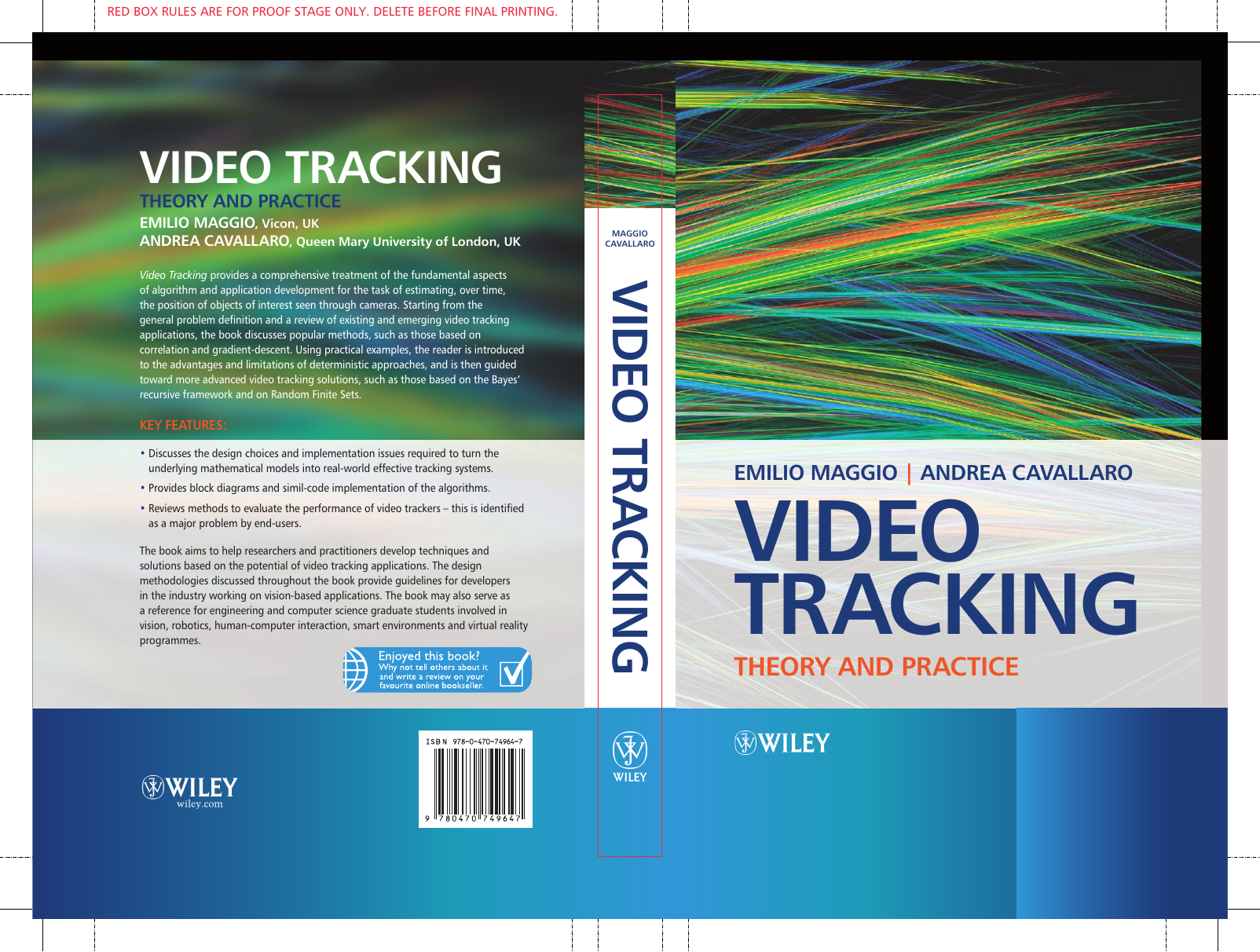



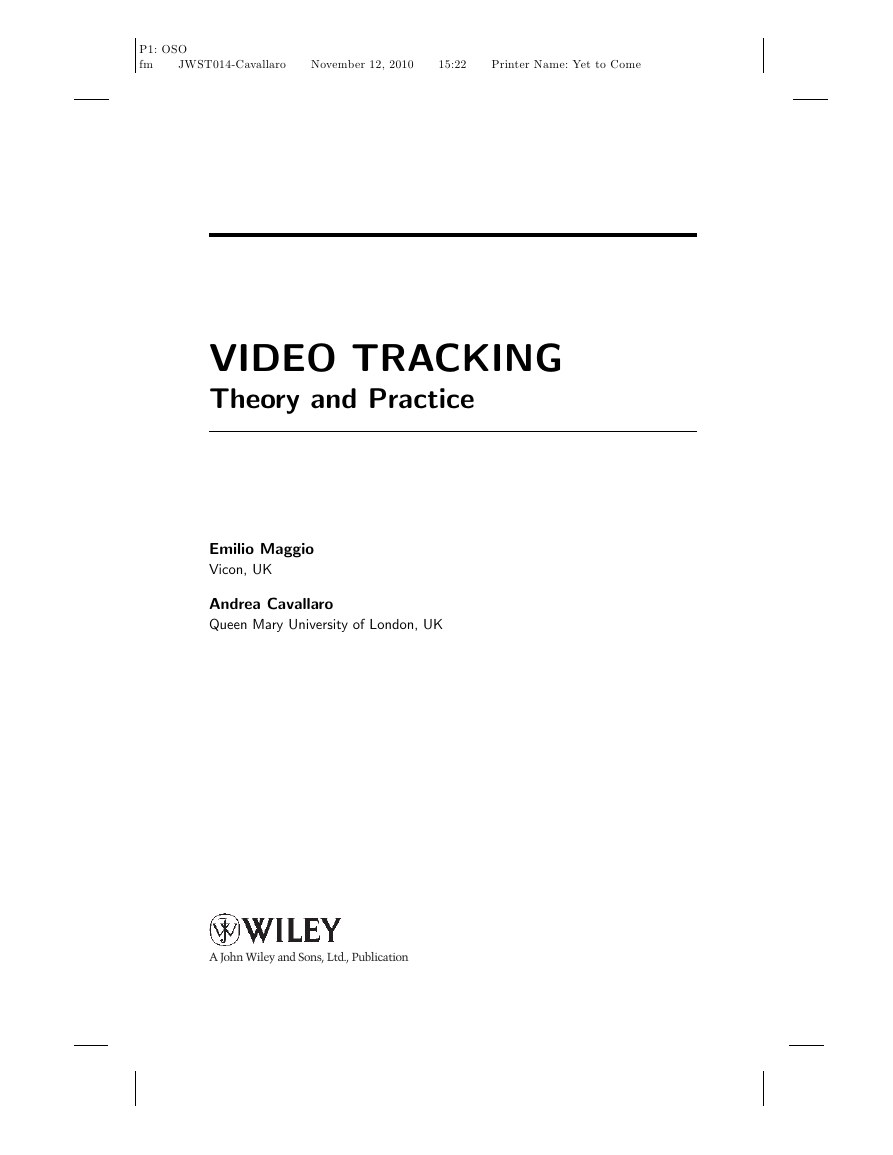
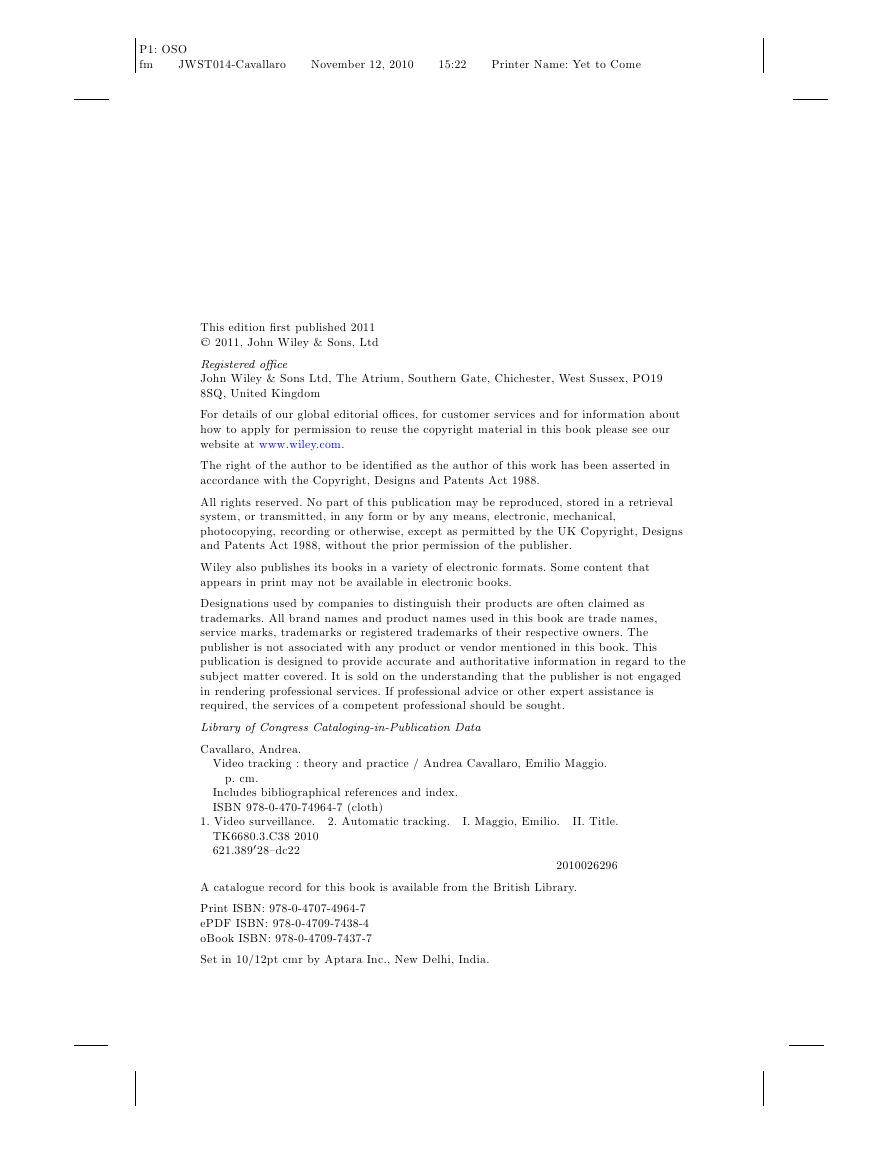
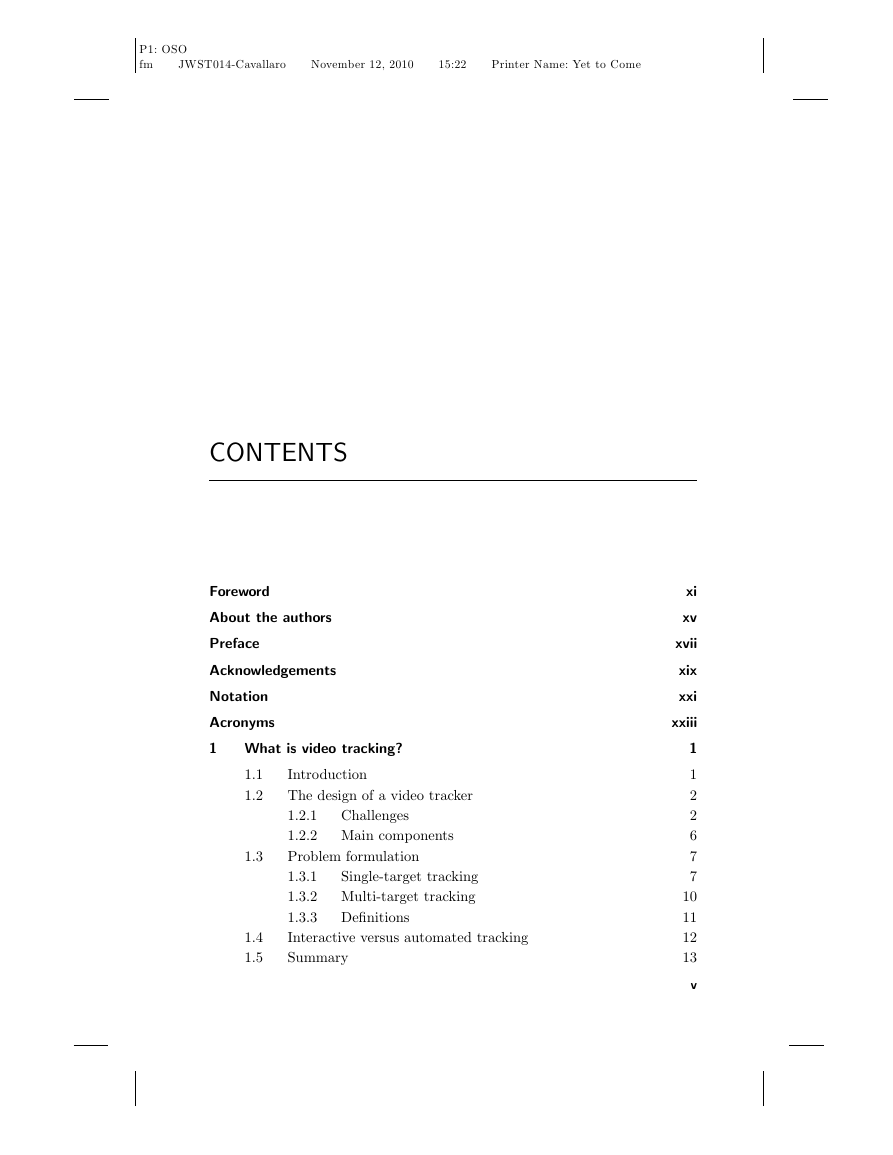
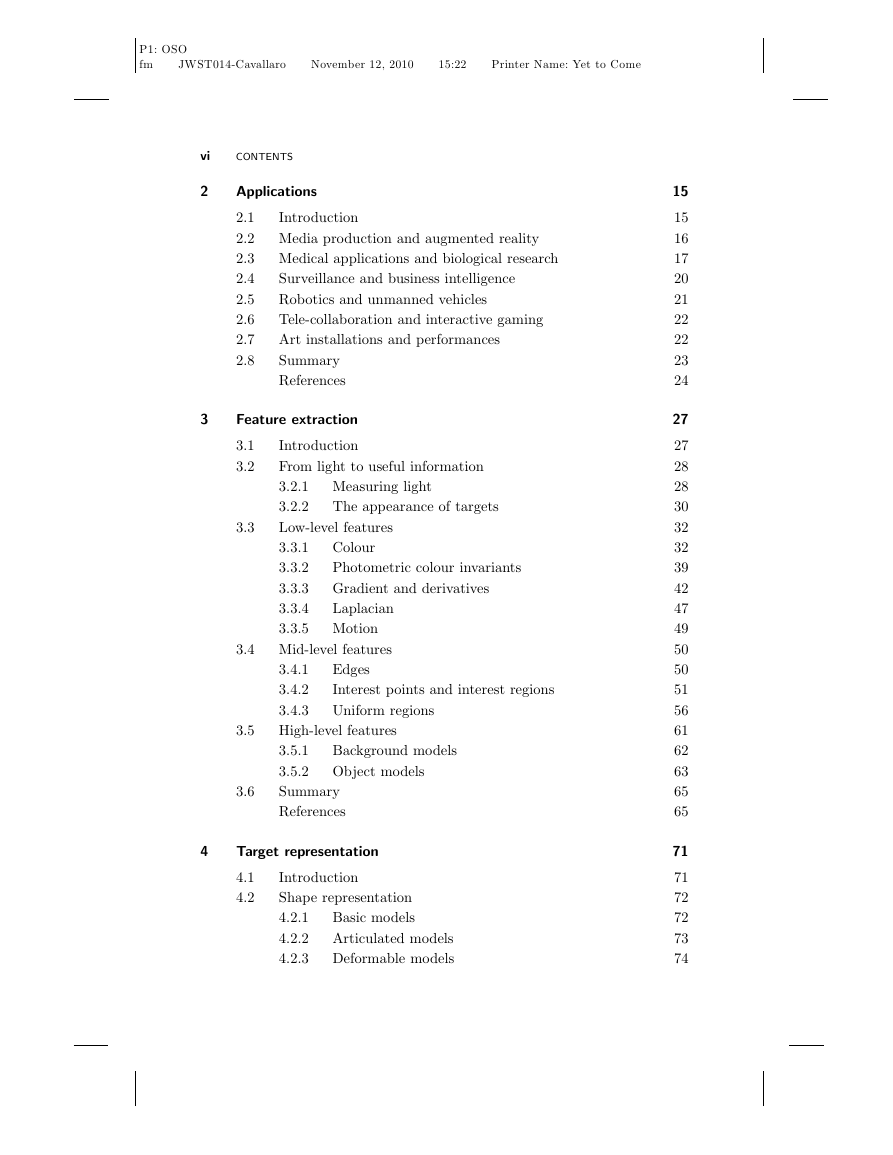








 2023年江西萍乡中考道德与法治真题及答案.doc
2023年江西萍乡中考道德与法治真题及答案.doc 2012年重庆南川中考生物真题及答案.doc
2012年重庆南川中考生物真题及答案.doc 2013年江西师范大学地理学综合及文艺理论基础考研真题.doc
2013年江西师范大学地理学综合及文艺理论基础考研真题.doc 2020年四川甘孜小升初语文真题及答案I卷.doc
2020年四川甘孜小升初语文真题及答案I卷.doc 2020年注册岩土工程师专业基础考试真题及答案.doc
2020年注册岩土工程师专业基础考试真题及答案.doc 2023-2024学年福建省厦门市九年级上学期数学月考试题及答案.doc
2023-2024学年福建省厦门市九年级上学期数学月考试题及答案.doc 2021-2022学年辽宁省沈阳市大东区九年级上学期语文期末试题及答案.doc
2021-2022学年辽宁省沈阳市大东区九年级上学期语文期末试题及答案.doc 2022-2023学年北京东城区初三第一学期物理期末试卷及答案.doc
2022-2023学年北京东城区初三第一学期物理期末试卷及答案.doc 2018上半年江西教师资格初中地理学科知识与教学能力真题及答案.doc
2018上半年江西教师资格初中地理学科知识与教学能力真题及答案.doc 2012年河北国家公务员申论考试真题及答案-省级.doc
2012年河北国家公务员申论考试真题及答案-省级.doc 2020-2021学年江苏省扬州市江都区邵樊片九年级上学期数学第一次质量检测试题及答案.doc
2020-2021学年江苏省扬州市江都区邵樊片九年级上学期数学第一次质量检测试题及答案.doc 2022下半年黑龙江教师资格证中学综合素质真题及答案.doc
2022下半年黑龙江教师资格证中学综合素质真题及答案.doc